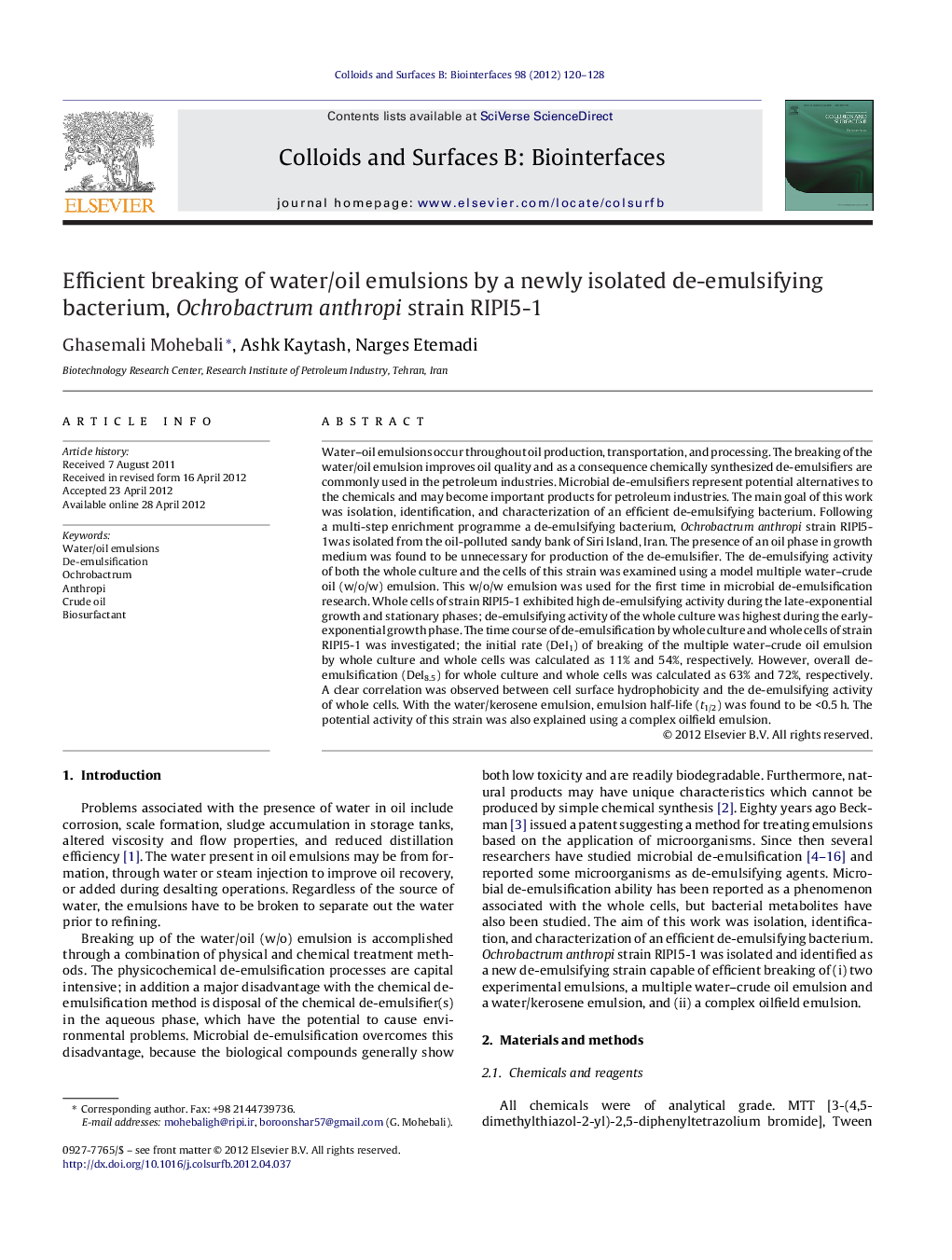| Article ID | Journal | Published Year | Pages | File Type |
|---|---|---|---|---|
| 600628 | Colloids and Surfaces B: Biointerfaces | 2012 | 9 Pages |
Water–oil emulsions occur throughout oil production, transportation, and processing. The breaking of the water/oil emulsion improves oil quality and as a consequence chemically synthesized de-emulsifiers are commonly used in the petroleum industries. Microbial de-emulsifiers represent potential alternatives to the chemicals and may become important products for petroleum industries. The main goal of this work was isolation, identification, and characterization of an efficient de-emulsifying bacterium. Following a multi-step enrichment programme a de-emulsifying bacterium, Ochrobactrum anthropi strain RIPI5-1was isolated from the oil-polluted sandy bank of Siri Island, Iran. The presence of an oil phase in growth medium was found to be unnecessary for production of the de-emulsifier. The de-emulsifying activity of both the whole culture and the cells of this strain was examined using a model multiple water–crude oil (w/o/w) emulsion. This w/o/w emulsion was used for the first time in microbial de-emulsification research. Whole cells of strain RIPI5-1 exhibited high de-emulsifying activity during the late-exponential growth and stationary phases; de-emulsifying activity of the whole culture was highest during the early-exponential growth phase. The time course of de-emulsification by whole culture and whole cells of strain RIPI5-1 was investigated; the initial rate (DeI1) of breaking of the multiple water–crude oil emulsion by whole culture and whole cells was calculated as 11% and 54%, respectively. However, overall de-emulsification (DeI8.5) for whole culture and whole cells was calculated as 63% and 72%, respectively. A clear correlation was observed between cell surface hydrophobicity and the de-emulsifying activity of whole cells. With the water/kerosene emulsion, emulsion half-life (t1/2) was found to be <0.5 h. The potential activity of this strain was also explained using a complex oilfield emulsion.
Graphical abstractFigure optionsDownload full-size imageDownload as PowerPoint slideHighlights► A new de-emulsifying bacterium, Ochrobactrum anthropi strain RIPI5-1, was isolated from an oil-contaminated soil. ► The whole culture/whole cell suspension of the strain was capable of efficient breaking up multiple water–oil emulsions containing crude oil, produced water and two synthetic surfactants. ► The strain was also able to break up a complex field (w/o) emulsion.
